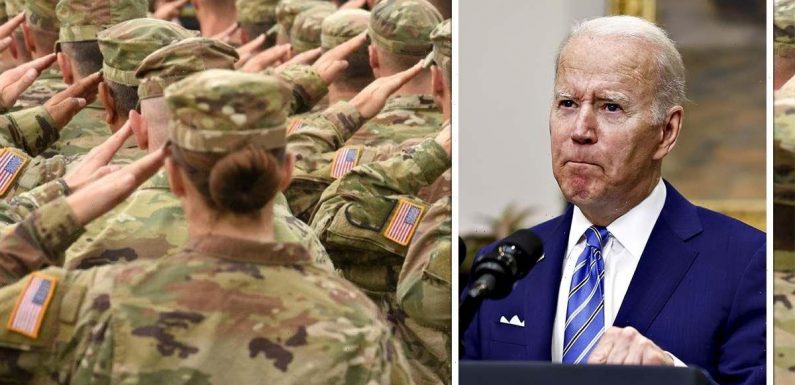
Obesity: UK 'going down road of America' says David Lammy
We use your sign-up to provide content in ways you’ve consented to and to improve our understanding of you. This may include adverts from us and 3rd parties based on our understanding. You can unsubscribe at any time. More info
People are classified as obese when their body mass index, or BMI, exceeds 30 kg/m² (6.14 pounds per square foot). It is associated with various conditions — including cardiovascular diseases, type 2 diabetes and cancer — and is a leading cause of disability. Weight limits for the US military vary with sex, age and height. For example, a new, five-foot-tall recruit aged between 17–20 must weigh in at under 139lbs if male and 120 lbs if female.
The report was penned by nutritional scientist Dr Sara Police of the University of Kentucky College of Medicine and her colleagues.
Dr Police said: “Despite efforts by the US government and Department of Defense, obesity continues to impact the military and the risk to national security is great.
“This is a complex problem that has a deep impact on national security by limiting the number of available recruits, decreasing reenlistment candidacy, and potentially reducing mission readiness.
“Additional, relevant issues include the changing demographics of the military and food insecurity among military families.”


According to the researchers, the demographics of today’s basic training regiments in the US now include a greater percentage of both women and racial/ethnic groups.
These are groups that tend to experience both a higher rate of obesity than the average for the overall population and also higher rates of food insecurity as well.
Having unreliable access to healthy food can also lead to obesity — not to mention an increased risk of anxiety and other mental health issues.
These, in turn, serve to further threaten military retention rates and mission readiness.


Dr Police said: “Research to uncover best practices will consider the increasing diversity within the armed forces, the importance of access to healthy food, and the opportunity to support nutrition education through informed leadership.”
According to the researchers, various previous studies have shown that accurate nutrition information and behaviour modelling can strongly influence the health of army recruits.
Dr Police explained: “Drill sergeants are essential and important leaders in the armed forces for coaching, counselling, mentoring, and training new soldiers.”
Nicole Ruppert, paper co-author and fellow Kentucky nutritional scientist, added: “Other leaders, including commanding officers and non-commissioned officers, also play essential roles in information dissemination and behaviour modelling.”
Such examples, she added, “could have a continued impact on soldiers beyond basic training.”
DON’T MISS
Shark mystery as super-rare ‘living fossil’ with 300 teeth found [REPORT]
Russia’s ‘only oil pipeline to EU’ in flames – 3 countries face crisis [INSIGHT]
How the UK, US and their allies could respond to a nuclear attack [ANALYSIS]

The connection between the health of the US populace and national security was first identified in 1946, albeit in rather the opposite fashion.
At this time, the issue was malnutrition, with limited calories per day available in the US food supply — and such was addressed by the introduction of the National School Lunch Program by the Truman administration.
Since then, the team said, increased portion sizes and dramatic calorie enrichments to the American food supply, alongside other factors, have promoted weight gain and reduced the number of people eligible for enlistment.
In fact, the proportion of eligible recruits who have exceeded the US military’s percent body fat standards has doubled among men — and tripled among women — since the sixties.
Military leaders have called for changes in US diet and nutritional patterns, including school-based initiatives to replace unhealthy food options and increased the uptake of both free and reduced-cost lunch programmes.
The full findings of the study were published in the Journal of Nutrition Education and Behavior.
Source: Read Full Article